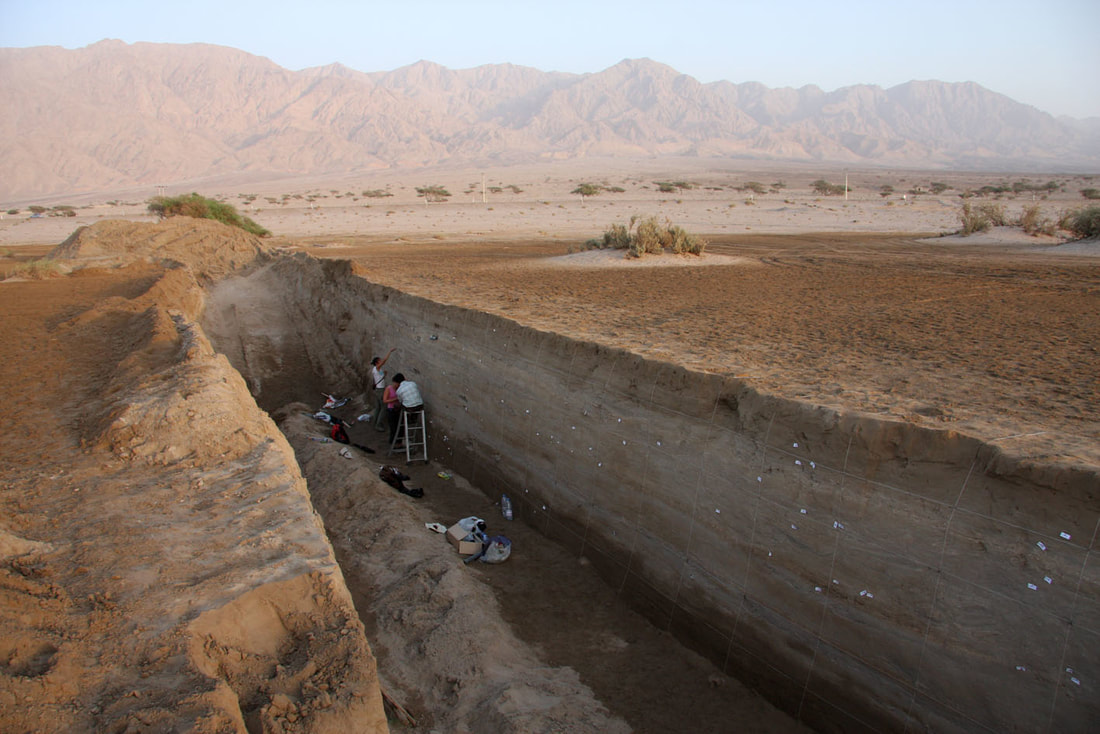Strike-slip fault kinematics > Paleo-earthquakes on the Wadi Araba fault, southern Dead Sea fault
|
- Motivation, approach, and first results:
Following the multiple-timescale fault slip rate investigation we conducted on the Wadi Araba segment of the Dead Sea fault, we found that the most simple model for the fault seismic behavior is a constant fault slip rate of 5-7 mm/a. The shortest time period we could investigate for long-term fault slip rate determination is about 12 ka, suggesting that 12 ka is long enough to average irregularities, if any, in the seismic cycle. Next, we wished to observe earthquake distribution over time at a shorter time scale. To do so, we excavated trenches across the active fault trace at two sites. Observation of ground rupture terminations on the trench walls and dating using 14C on charcoal lead to the earthquake rupture history at both sites, where most events could be correlated with historical events as far back as 363BCE. The comparison of both records allowed to propose rather clustered earthquake rupture scenarios for the Wadi Araba fault (Lefevre et al, 2018). Existing paleo-seismic studies were also combined at the scale of the southern Dead Sea fault, south of the Dead Sea basin. Earthquake sequences appear to break the whole fault within few centuries and we estimate that about 2 m slip deficit accumulated nearly everywhere along the fault since the last sequence of ruptures, meaning that a next sequence of large earthquakes can be expected in the near future. |
Field view of the Qatar trench across the southern
Wadi Araba fault (Klinger et al, 2015) |
>> Read more:
Klinger Y., M. Le Béon and M. Al-Qaryouti (2015), 5000 yr of paleoseismicity along the southern Dead Sea fault, Geophys. J. Int., 202 (1): 313-327, doi:10.1093/gji/ggv134.
Lefevre M., Y. Klinger, M. Al-Qaryouti, M. Le Béon and K. Moumani (2018), Slip deficit and temporal clustering along the Dead Sea fault from paleoseismological investigations, Scientific Reports, 8 (1): 4511, doi:10.1038/s41598-018-22627-9.
Klinger Y., M. Le Béon and M. Al-Qaryouti (2015), 5000 yr of paleoseismicity along the southern Dead Sea fault, Geophys. J. Int., 202 (1): 313-327, doi:10.1093/gji/ggv134.
Lefevre M., Y. Klinger, M. Al-Qaryouti, M. Le Béon and K. Moumani (2018), Slip deficit and temporal clustering along the Dead Sea fault from paleoseismological investigations, Scientific Reports, 8 (1): 4511, doi:10.1038/s41598-018-22627-9.

